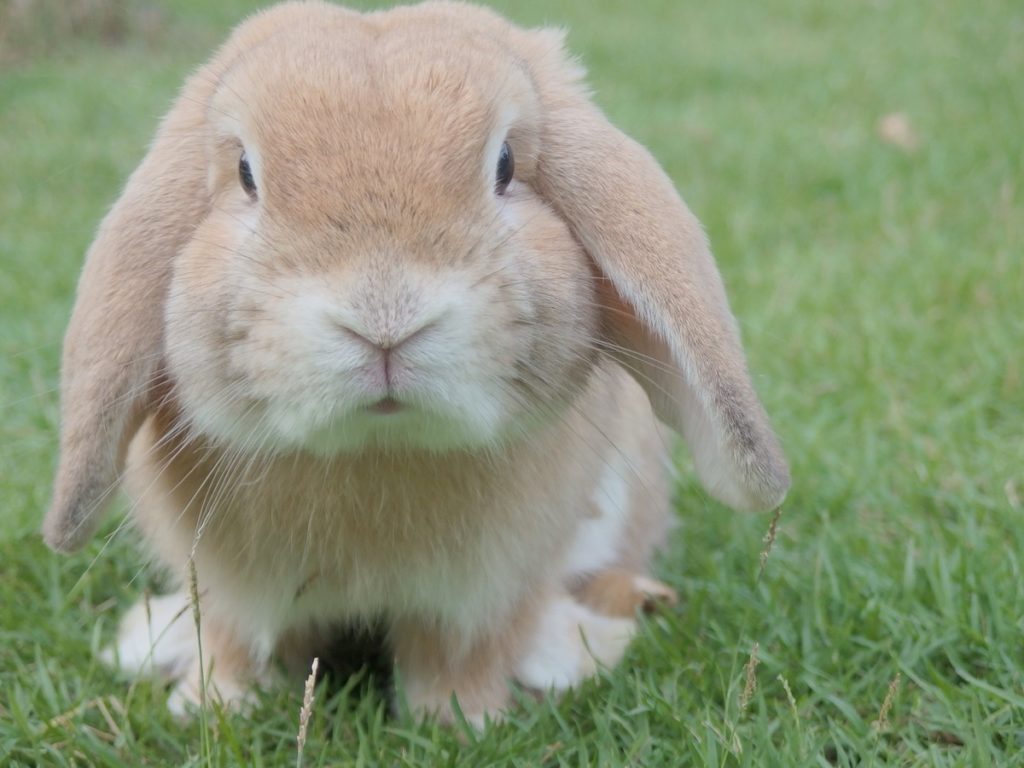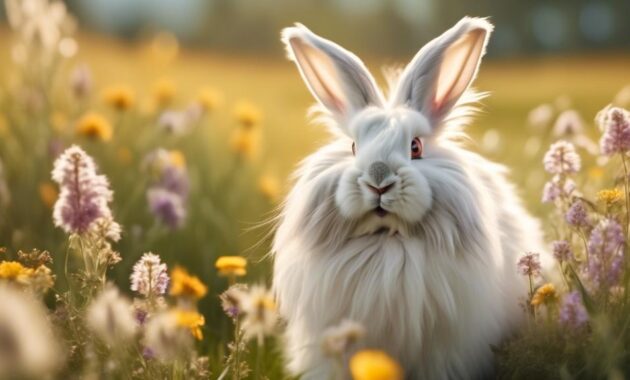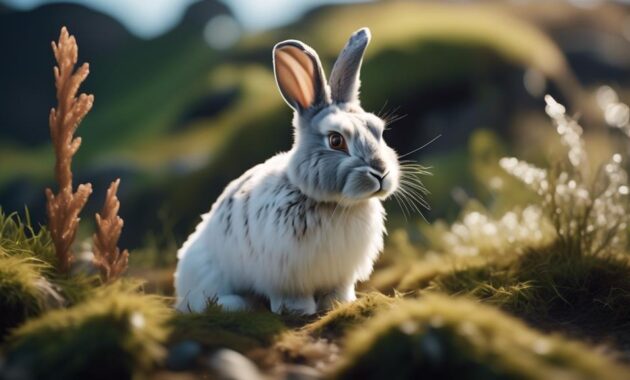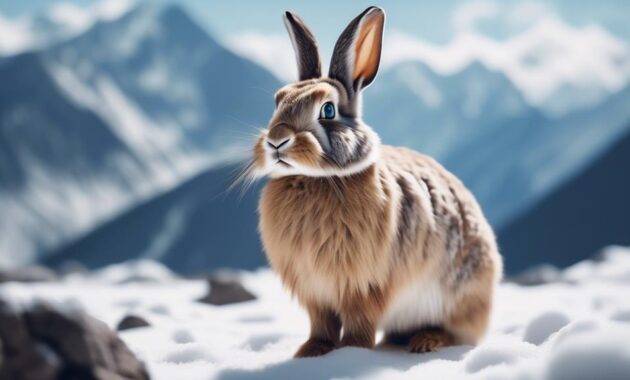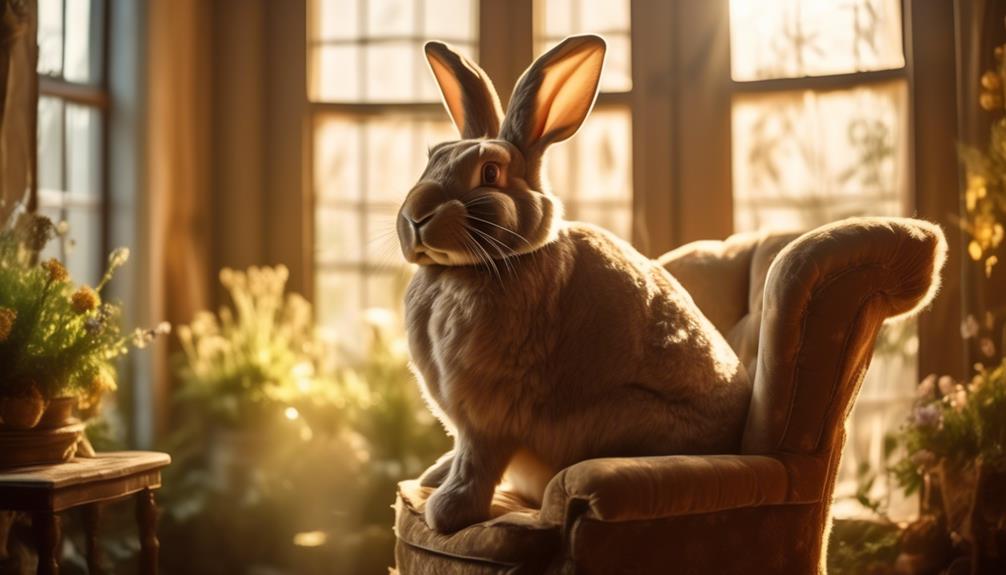
The Enormous Flemish Giant Rabbit, a breed renowned for its impressive size and docile nature, is a fascinating creature to behold. With an average weight of 15 pounds, these rabbits can reach up to a staggering 22 pounds for males and 20 pounds for females.
But what makes these gentle giants so captivating? How did they come to be? And what do they require in terms of care and attention?
In this article, we will unravel the mysteries surrounding the origins, physical attributes, and unique traits of the Flemish Giant Rabbit, leaving you eager to discover more about this remarkable breed.
Key Takeaways
- Flemish Giant rabbits are known for their impressive size, with males weighing up to 22 pounds and females up to 20 pounds.
- They have a friendly and docile temperament, making them suitable for families with children and first-time rabbit owners.
- The breed has a long history, with uncertain origins but a recognized presence in America since the 1890s.
- Flemish Giant rabbits have a glossy, short, and dense coat, with accepted colors including sandy, fawn, white, light gray, steel grey, black, and blue.
Origin and History
Where did the Flemish Giant Rabbit originate and what’s its historical background?
The origins of the Flemish Giant Rabbit are uncertain, as it’s believed to be descended from the Patagonian and/or Stone rabbits. These rabbits were introduced to America in the 1890s and gained popularity among breeders.
In 1915, the National Federation of Flemish Giant Rabbit Breeders was formed, and in 1924, the breed was included in the American Rabbit Breeders Association. Finally, in 1929, the ARBA officially recognized the Flemish Giant breed.
Known for their impressive size, with an average weight of 15 pounds, the Flemish Giant has a mandolin or semi-arched body shape and erect ears. Their coat is glossy, short, and dense, and they come in a variety of accepted colors, including sandy, fawn, white, light gray, steel grey, black, and blue.
With proper care and nutrition, these rabbits can live a healthy life of 5-8 years.
Physical Description
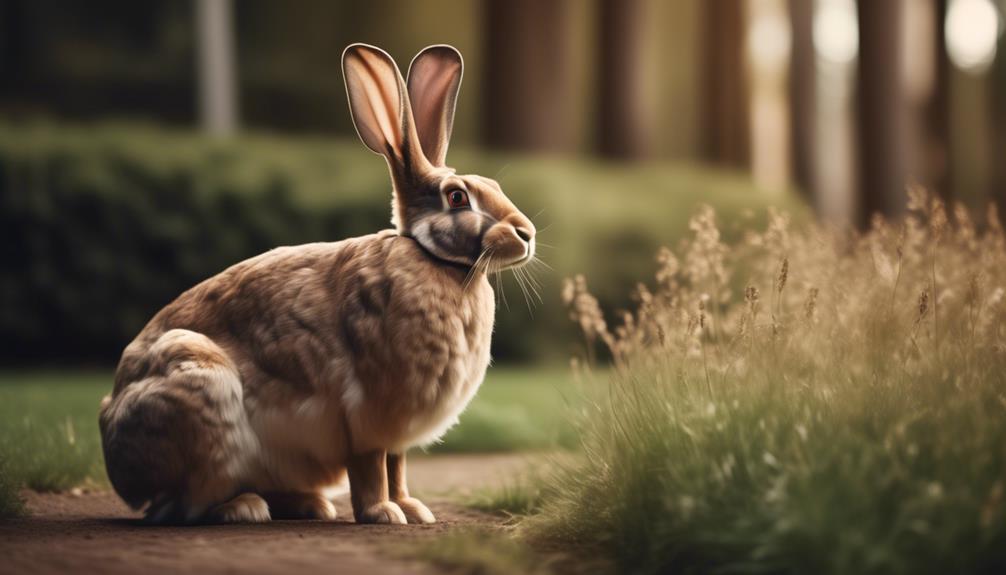
After exploring the origin and history of the Flemish Giant Rabbit, it’s important to delve into its physical description.
This impressive rabbit is known for its enormous size, with an average weight of 15 pounds. Males can weigh up to 22 pounds, while females can reach up to 20 pounds. They’ve a distinctive mandolin or semi-arched body shape, with long and strong bodies that have a well-defined rise.
The males have broader heads, while females may have dewlaps. Their ears are erect and measure around 5 inches in height.
The Flemish Giant Rabbit has a glossy, short, and dense coat, with accepted colors by the American Rabbit Breeders Association including sandy, fawn, white, light gray, steel grey, black, and blue. Their coat is low maintenance, with minimal grooming required.
Temperament and Behavior
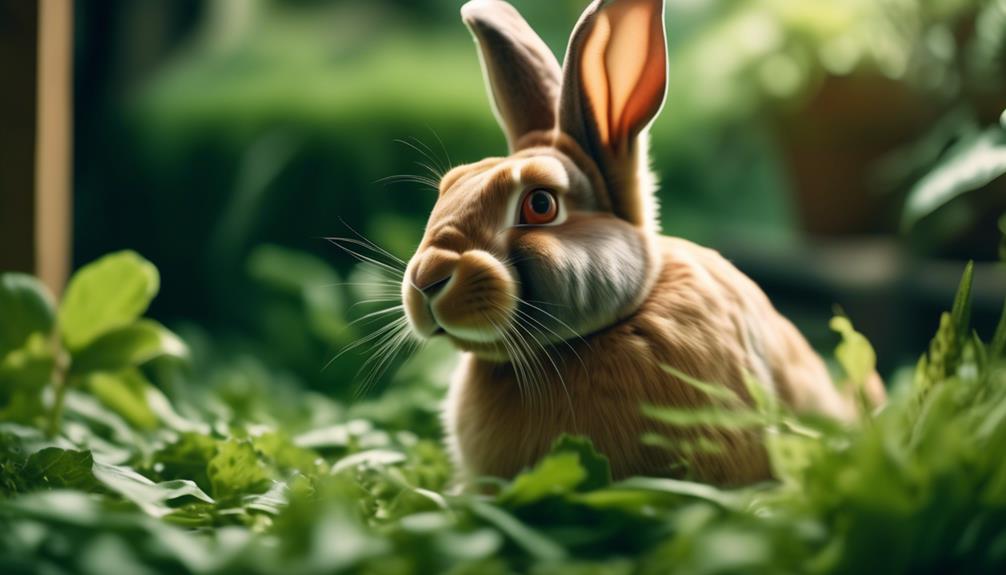
The Flemish Giant Rabbit is known for its friendly and docile temperament. These rabbits are typically very sweet and gentle in nature, making them great companions for families with children or first-time rabbit owners. They’ve a reputation for being calm and easygoing, which contributes to their popularity as pets.
Flemish Giants are generally not aggressive and are known to be quite sociable. They enjoy being around people and can be quite affectionate. It’s important to note that like any other animal, individual temperaments can vary. However, overall, the Flemish Giant Rabbit is known for its friendly and docile nature, making it a wonderful addition to any home.
Coat Colors and Patterns
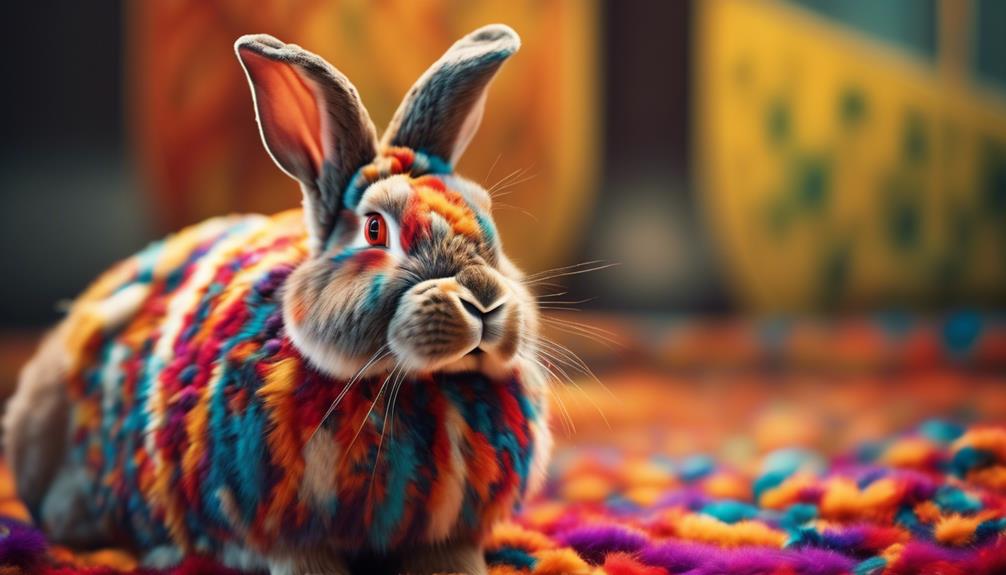
Moving on to the next aspect of the Flemish Giant Rabbit, let’s now explore its coat colors and patterns. The Flemish Giant Rabbit has a glossy, short, and dense coat that requires minimal grooming. They shed more during the spring months. The American Rabbit Breeders Association (ARBA) accepts several colors for the Flemish Giant, including sandy, fawn, white, light gray, steel grey, black, and blue. However, broken patterns are not accepted. To provide a clearer understanding, here is a table showcasing the accepted coat colors of the Flemish Giant Rabbit:
| Accepted Coat Colors |
|---|
| Sandy |
| Fawn |
| White |
| Light Gray |
| Steel Grey |
| Black |
| Blue |
With these beautiful coat colors, the Flemish Giant Rabbit is sure to catch the eye of any rabbit enthusiast.
Care and Housing
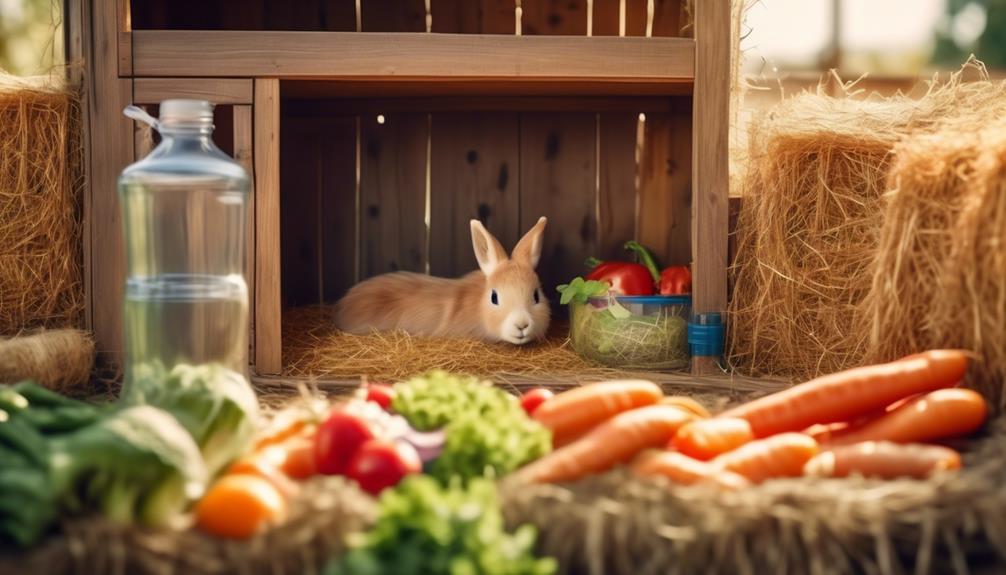
To properly care for a Flemish Giant Rabbit, it’s important to provide suitable housing and ensure their overall well-being. These rabbits are best suited for indoor or outdoor enclosures, with a minimum size of 3 feet by 4 feet. Regular time outside of the enclosure is also necessary for their mental and physical stimulation.
In terms of nutrition, a well-balanced diet is key, with an emphasis on hay, fruits, vegetables, and pellets. While Flemish Giant Rabbits aren’t particularly susceptible to hereditary diseases, it’s important to monitor their dental health as overgrown teeth can be a common issue.
Nutrition and Health
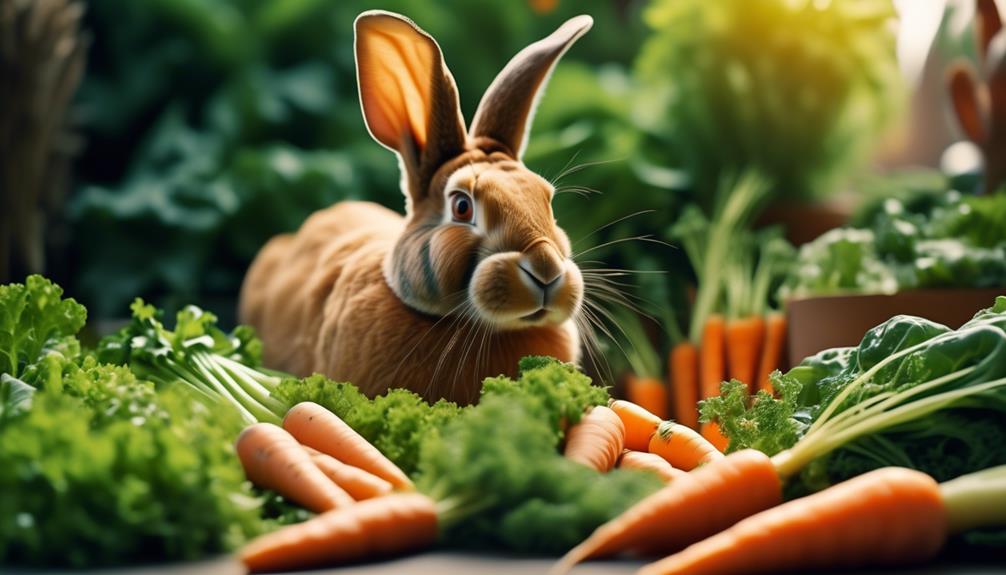
A well-balanced diet is crucial for maintaining the nutrition and overall health of a Flemish Giant Rabbit. These rabbits require a diet that consists mainly of hay, which should make up about 80% of their daily food intake. Timothy hay is a good choice for their dental health.
Along with hay, they should also be given a variety of fresh fruits and vegetables, such as leafy greens, carrots, and apples. It’s important to avoid feeding them foods that are high in sugar or starch, as this can lead to obesity and other health issues.
Additionally, Flemish Giant Rabbits should have access to fresh water at all times. Regular veterinary check-ups are recommended to ensure their well-being, and it’s important to monitor their teeth as they can be prone to overgrowth.
Fun Facts and Trivia
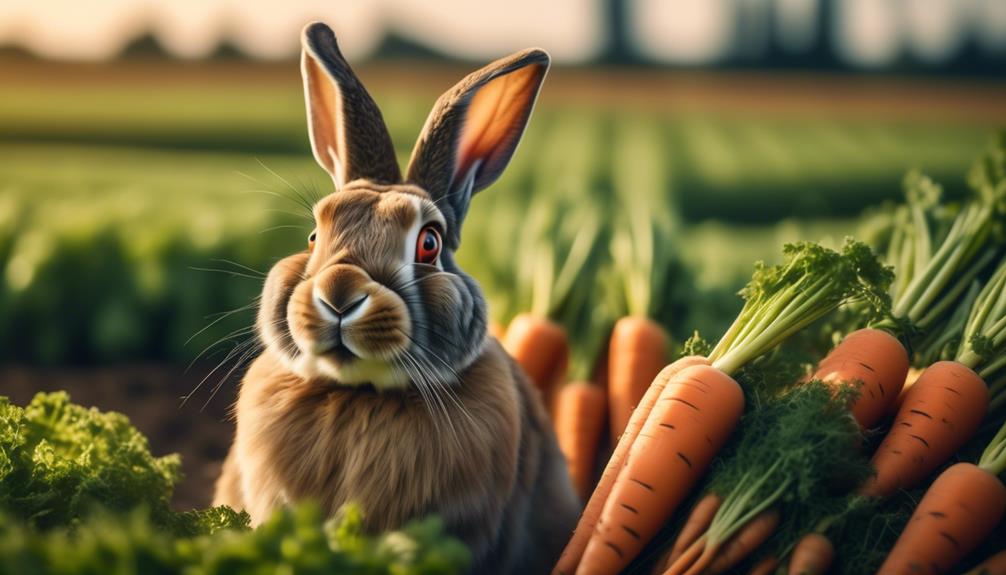
After discussing their nutrition and health needs, let’s now explore some fascinating fun facts and trivia about Flemish Giant Rabbits. These gentle giants have some interesting characteristics and history that make them unique. Did you know that Flemish Giants are the largest breed of rabbit in the world? They can weigh anywhere from 9 to 14 pounds, with some males weighing up to a whopping 22 pounds! Another fun fact is that the breed has uncertain origins, with some believing they are descendants of Patagonian and/or Stone rabbits. Additionally, Flemish Giants have a variety of accepted colors by the American Rabbit Breeders Association, including sandy, fawn, white, and more. Check out the table below for a quick summary of some fun facts about Flemish Giant Rabbits.
| Fun Fact | Details |
|---|---|
| Largest breed of rabbit | Weighing up to 22 pounds |
| Uncertain origins | Possibly descended from Patagonian and/or Stone rabbits |
| Variety of accepted colors | Including sandy, fawn, white, and more |
Flemish Giants are not only fascinating but also make great companions for individuals and families alike.
Frequently Asked Questions
How Do You Properly Groom a Flemish Giant Rabbit’s Coat?
To properly groom a Flemish Giant Rabbit’s coat, brush it gently using a slicker brush or a soft-bristled brush. This helps to remove loose fur and prevent matting. Regular grooming is important to maintain the rabbit’s coat health and prevent hairballs.
What Is the Average Lifespan of a Flemish Giant Rabbit?
The average lifespan of a Flemish Giant rabbit is 5-8 years. They are not particularly susceptible to hereditary diseases but may experience common issues like overgrown teeth.
Can Flemish Giant Rabbits Be Litter Trained?
Flemish Giant rabbits can be litter trained. They are intelligent animals that can be taught to use a litter box like cats. Consistent training, positive reinforcement, and providing a suitable litter box are essential for successful litter training.
Are Flemish Giant Rabbits Good With Other Pets, Such as Dogs or Cats?
Flemish Giant rabbits can be good with other pets, such as dogs or cats, if properly introduced and supervised. However, it’s important to remember that each animal is unique, so careful observation and gradual introductions are key.
How Often Do Flemish Giant Rabbits Need to Be Taken to the Veterinarian for Check-Ups?
Flemish Giant rabbits should be taken to the veterinarian for regular check-ups at least once a year. However, it is recommended to consult with a veterinarian for a specific schedule based on the rabbit’s health and individual needs.
Can Giant French Lop rabbits also grow to be as large as Flemish Giant rabbits?
Yes, giant French lop rabbits can grow to be as large as Flemish giant rabbits. However, their size may vary depending on genetics and care. Some giant French lop rabbits can reach a similar size to Flemish giants, but others may not grow quite as large.
Conclusion
In conclusion, the Flemish Giant Rabbit is a fascinating breed with a rich history and impressive size.
With their gentle temperament and low grooming needs, these rabbits make wonderful pets for individuals and families alike.
Their variety of coat colors adds to their appeal, and with proper care and nutrition, they can live long and healthy lives.
Whether you’re a first-time owner or an experienced rabbit enthusiast, the Flemish Giant Rabbit is sure to bring joy and companionship into your life.

